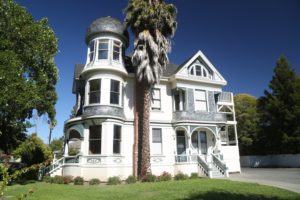
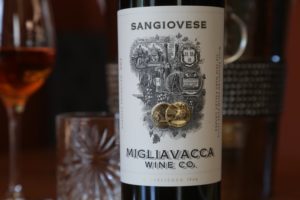
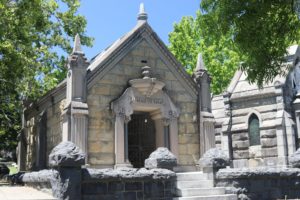 Migliavacca Wine Company. The Migliavacca (the ‘g’ is silent) family winemaking heritage is deeply rooted in the historical fabric of the city of Napa. For some 50+ years from 1866 through to the start of Prohibition, Migliavacca Wine Co was a formidable presence. Founder Giacomo Migliavacca became the city’s first self-made millionaire, at one point was the largest wine producer in the state of California (capacity of 1.5 million gallons) and earned numerous medals and awards for his wines including 1869 First Premium California Red Wine from the Mechanics Institute, 1889 Gold Medal from the Paris Exposition in France, 1892 Dublin Ireland Exposition, 1893 Chicago World’s Fair and 1895 Atlanta Exposition. And his wines were being shipping to a number of states around the country including Texas (Galveston), Washington (Seattle) and Louisiana (New Orleans).
Migliavacca Wine Company. The Migliavacca (the ‘g’ is silent) family winemaking heritage is deeply rooted in the historical fabric of the city of Napa. For some 50+ years from 1866 through to the start of Prohibition, Migliavacca Wine Co was a formidable presence. Founder Giacomo Migliavacca became the city’s first self-made millionaire, at one point was the largest wine producer in the state of California (capacity of 1.5 million gallons) and earned numerous medals and awards for his wines including 1869 First Premium California Red Wine from the Mechanics Institute, 1889 Gold Medal from the Paris Exposition in France, 1892 Dublin Ireland Exposition, 1893 Chicago World’s Fair and 1895 Atlanta Exposition. And his wines were being shipping to a number of states around the country including Texas (Galveston), Washington (Seattle) and Louisiana (New Orleans).
NOTE: we have traveled to numerous historical Migliavacca locations; please reference towards the bottom of this review for photographs of such spaces and places.
In addition, in 1869 he became the first Napa County resident to receive a winery related U.S. patent – for his “Wine Bottling and Corking Apparatus”; one of these devices is housed at the Napa Museum in Yountville but is not on display and visitors must fill out a special request form to see this item in person. Through our initial efforts, this item was displayed publicly at an exhibit at the Goodman Library from October 2021 through March 2022. According to Sheli Smith, the Executive Director of the Napa County Historical Society, it most likely was the prototype for the actual patent (the first one he ever built).
Fast forward some 150 years after Giacomo moved to Napa Valley, great, great granddaughter & Napa native Katie Migliavacca recalls how she first met her business partner and winemaker Vincent Traverso. At 10pm one night she was invited on a trip to Lake Tahoe by her friend Padriac (Pad) McGinnis. Turns out Pad also knew Vincent and had invited him to the lake. The first person Katie met that trip was Vincent and both soon bonded over shared interests including history, wine and travel. When Katie met him, he had recently returned to the Napa Valley where he was born and raised after having been abroad for 10 years working for the state department in places such as Afghanistan and Libya. He also lived in France and Italy and during his time in Europe earned his degree in viticulture and enology – studying in Montpellier, France and Verona, Italy.
He worked with Kirk Venge for many years until 2022 helping oversee various winemaking projects and properties for Venge Vineyards; in early 2023 he started his own consulting service for small wine brands called Studio Traverso. He is also co-owner of the old Kingfish Pub & Café in Oakland (dates from 1922), located at 5227 Telegraph Avenue. Ever the quintessential local neighborhood bar with character, one comes here to drink, talk history, add to the nonsensical scribbles on the ceiling, play a game or two, eat popcorn and meet other intriguing folks. Open daily from the afternoon until late.
Katie remembers being interested in her family’s wine heritage back when she was in her early teens. Later she became intrigued about exploring the possibility of restarting her family’s wine brand. And as she told us, “If I don’t do something, it will never get done” and there of course, was always the possibility that a non-family member would resurrect the label.
She soon sent Vincent an article the Napa Register had written about her family’s heritage in Napa Valley. He was immediately hooked.
—
Giacomo was born in the town of Pavia, Italy on August 16, 1833 (about an hour drive south of Milan); his original home is still standing. During a trip to Italy, Katie visited the piazza and saw the outside of Giacomo’s original home. According to an article in the August 2, 1907 issue of the Napa Weekly Journal, Giacomo had recently returned from a trip to Europe including a visit to his original family home in Pavia. That was perhaps the last time he saw this house as he died only 4 years later.
This building is located in southwest corner of the popular Piazza della Vittoria in central Pavia. Our photographs of our visit here are located at the bottom of this review. The first floor is currently occupied by the popular Bar Lux, serving a variety of drinks and light bites with both a limited number of indoor seats and weather permitting, plenty of tables and chairs in the piazza. We recommend arriving in the am, ordering either a coffee or a freshly squeezed orange juice and several pastries. Sit at a table and observe the comings and goings of those visiting the piazza. Giacomo would certainly approve. The upper three floors of the home are occupied by residents. And right outside the building is the entrance to the historic and impressive Cattedrale di Santo (Cathedral of Pavia) which dates to the 1400s.
The most historic building on the plaza is Broletto which dates from 1198 and will celebrate its 1,000th year anniversary next century. Some of the widows on the upper floor of Giacomo’s old house look out directly onto this building. For historical reference, Giocomo was born 635 years after the Broletto was constructed.
Giacomo’s commute to the University of Pavia was a very short walk – with the central campus located mere minutes away from the family home. This university was founded in 1361 but has ties to a law school in Pavia founded in the year 825. The university is located on multiple campuses throughout the city including the science departments in a separate much newer campus located outside of the city of Pavia. Giacomo studied viticulture at the university. For visitors, the library, located in the main university building is one of the highlights of any visit to the campus. Walking in here feels like a direct link to a time hundreds of years ago. It has been located in its current space since 1778; Giacomo must certainly have spent time studying here. It contains more than 45,000 books; its oldest printed book dates back to the 1100s and is located in the first glass case to the right as one enters its cozy confines (after passing through the reception area). This library is open to visitors.
And also worth visiting at the university are some of the ‘towers of Pavia’ located in the Piazza Leonardo da Vinci. These impressive brick towers were built between the 11th and 13th centuries. While approximately 65 used to exist, the central part of Pavia still features about 20 of these ‘early skyscrapers’ although many have been reduced in height since their original construction.
There are still Migliavacca’s in Pavia. We have found reference to a Roberta Migliavacca, a professor at the University of Pavia, Migliavacca Bus Company, whose business started in Pavia in the 1930s and Pavia born, Bishop Andrea Migliavacca (who died in 2023).
After graduating from the University of Pavia Giacomo joined his father in the profitable family business, the manufacturing of cordials and liquors. When the Revolutions of 1848 in the Italian states began, Giacomo joined the Noble Guard of Milano. Following his service, he returned to Pavia and once again joined his father in the family business. Giacomo immigrated to the United States in 1857 at age 24 sailing into the San Francisco Bay on the S.S. Golden Gate which later sunk off the coast near Manzanillo, Mexico in 1862 in which approximately 200 lives were lost. Giacomo no doubt had a visceral reaction to this once he heard the news, only 5 years after his own voyage.
Soon after he arrived in San Francisco – he founded and operated a successful vinegar factory. After a few years, he sold the factory and moved up to Hornitos in Mariposa County, home at that time of a number of Italian immigrants including at one point Domingo Ghirardelli, founder of Ghirardelli Chocolate in San Francisco and namesake for Ghirardelli Square. And this would become a pivotal move in young Giacomo’s life. His initial introduction to Hornitos perhaps was through his wife’s family – the Semorile’s who had been living and working in Hornitos since 1855.
At its peak, Hornitos was home to more than 15,000 people and was producing some $40,000 dollars of gold daily (a huge sum of money in those days); the town was also home to the first Wells Fargo office in the county. Giacomo operated a grocery store in Hornitos and it was here that he met Madelena (whose own heritage is from the tiny Zoagli along the Italian Mediterranean coastline); they were married in 1860. Today Hornitos is essentially a ghost town although people still live in town and in the immediate vicinity. A number of buildings are remarkably well preserved from the 1850s and 1860s; the town has two cemeteries – one at St. Catherine’s Catholic Church and a smaller more hidden one near the fire station on the north side of town. One of the town’s most memorable events is the All-Souls’ Day candlelit procession every November 2nd – which winds its way up to St. Catherine’s Catholic Church (and all the surrounding grave sites are lit by the flickering candle lights including several of Katie’s relatives).
The Migliavacca heritage in Napa dates back to 1866 when Giacomo and Madelena and several of their children (eventually they would have 13 children, 10 of whom survived including Lawrence, Katie’s great grandfather) settled in downtown Napa. For historical reference, this was merely 18 years after the first ‘western’ buildings were constructed in the city of Napa although the Cayetano Juarez Adobe, Napa’s oldest still standing structure was constructed 21 years prior in 1845. Giacomo would become a prominent businessman in the valley – associated with a number of buildings in the downtown area. He established Migliavacca Wine Co in 1866 and produced the first Migliavacca wines inside a grocery store that he owned.Giacomo was among the early vintners producing wine commercially in Napa Valley. However, there were a few other important personalities in Napa’s earliest commercial winemaking history – according to the Napa County Historical Society, England born, John Patchett made some wine in 1857 but made the first commercial wine in Napa Valley in 1858, 6 barrels at his winery in the city of Napa called Patchett’s Grove. His winemaker at that time was Charles Krug – starting what would eventually become common in the Napa Valley, hiring winemakers. Interestingly, the Migliavacca mausoleum at the Tulocay Cemetery in the city of Napa is located within a very short walk of Patchett’s grave site.
Charles Krug would soon start what would become his iconic namesake winery in 1861. St. Helena located David Fulton Winery was also built in 1861 following Krug. The original Schramsberg winery dates from 1862. Suffice to say, there are very few wineries/producers in Napa Valley that were founded in the 1860s. Others with physical wineries built in the 1860s but are no longer in existence, include Crane, Pellet, Brannan, Woodward and Sigrist.
—
In 1874 Giacomo built a sizable two-story brick winery, encompassing a full city block near the corner of Brown and Division streets. Since 1974 this site has been home of the Napa County Library. The original winery building was 80′ by 100′ and also included a distillery and made use of a pier out into the nearby Napa River for shipping products to San Francisco.
According to Louis M. Martini in the UC Berkeley California Wine Industry Oral History Project dated 1973, San Francisco’s oldest and still operating Italian restaurant Fior d’ Italia (founded 1886) used to purchase wine from Migliavacca Wine Co to serve in their restaurant.
While Migliavacca winemaking did not survive past the start of Prohibition, the main winery building did (although one of the buildings on site burned down in 1922). Later in the 1920s the Migliavacca family sold the winery to Colonial Grape Producers. In 1937 this 60+ year old building at 581 Brown Street was purchased by Rodgers Bottling Company, bottlers of Coca Cola and Acme beer. Soon after their purchase they remodeled the building and occupied it for a number of years until eventually moving their operations to Vallejo. In later years part of the old winery building was leased by the Department of Motor Vehicles.
The original Migliavacca residence was a small house located on the southeast corner of Randolph and Division Streets, a very short walk to the winery. Between 1890 and 1893, Giacomo built what is referred to as the Migliavacca Mansion at the intersection of Coombs and Division Street next to the winery (address 580 Coombs Street). The mansion was designed by William H. Corlett and built in part from redwood; it features Italian slate shingles on the upper two stories. This beautiful Queen Anne style home was connected to his winery by a room housing a brick kitchen. This room was later destroyed when the house was moved several times, ultimately to 4th Street in late October 1975, where it currently stands and is currently used for office space. The architect was prominent Napan, Luther Turton, who was also responsible for the gorgeous Noyes Mansion (currently home of the offices of the Wine Spectator), the Goodman Library (still standing on First Street and occupied by the Napa County Historical Society) and the Winship-Smernes Building on the southeast corner of First and Main Streets. And when Giacomo passed in 1911 his funeral was held in this home. His obituary in the The St. Helena Star dated November 24, 1911 refers to him as, “one of the best known wine manufacturers and dealers in the state”.
Also of interest, one of the city of Napa’s most influential and prominent citizens, real estate developer and investor in community and people, George Altamura hitchhiked to Napa from Buffalo, New York in 1947. His first official residence at the time in one of the small rooms on the second floor of the Migliavacca Mansion, back when it stood in its original location closer to the Napa River. At the time the mansion was being rented out to a limited number of tenants.
A full page photograph of the Migliavacca Mansion appeared in a 25 page article about the Napa Valley in the May 1979 issue of National Geographic (the photographer was Charles O’Rear, famous for his Bliss, the photograph taken in Carneros used as the desktop wallpaper for Microsoft’s Windows XP operating system). The family sold the mansion in 1925 and since then, it has had a number of owners over the years including Ed Keith (one time proprietor of Catacula Lake Winery – now Maxville Creek Winery).
The mansion was slated to be demolished in the early 1970 to make way for the construction of the Napa County Library. At that time, it was owned by Napa County and through funds secured from the Housing and Urban Development (HUD) and research efforts by Bruce & Elorene Cambique, the mansion was ultimately saved and subsequently moved to its current location.
One longtime resident told us when her brother was in his formative years, he used to go into the old house with his friends – one day he removed the old fireplace mantle, brought it home and was immediately admonished by their father and quickly returned it to its proper place inside the mansion. More recently the Migliavacca mansion has been used as one of the venues for Porchfest, a free one-day annual event showcasing Napa musicians playing on front porches. And in 2023 it underwent an exterior beautification.
Mikulas Kravjansky mural, downtown Napa
A raised mural on the west side of Randolph Street next to the intersection of 1st Street, depicts a number of early city of Napa scenes including of the Migliavacca Mansion. This mural was painted by artist Mikulas Kravjansky in 1990.
Between 1904 and 1905 Giacomo constructed a huge stone building – what was known as the Migliavacca Commercial Building (or as locals called it, “the mig” on site of what is now the Dwight Murray Plaza at 1110 First Street. A tall clocktower stood on site from 1974 until it was finally torn down in 2000. Soon after its completion, parts of the building were badly damaged in the 1906 Santa Rosa/San Francisco Earthquake with some of the stone walls on the upper level destroyed and rubble piled up on the sidewalk on 1st Street. Repairs took about 4 months.
It is a truly a shame this building was torn down in 1973 (as part of downtown Napa’s redevelopment program). St. Helena couple and Napa Valley historians David and Kathleen Kernberger (both deceased) were part of a group that tried to save this old building in late 1972. They even wrote a book together inspired by their efforts to save this old building among others in downtown Napa – called Mark Strong’s Napa Valley, 1886-1924 with a spotlight on the Migliavacca building on page 24. And also, directly resulting from their initial preservation efforts, they helped form the Napa Historic Preservation Society in 1973. Kathleen was a founding board member of the St. Helena Historical Society.
It was once the largest stone building in all of the city of Napa and over the years housed numerous tenants – some of the most prominent being the headquarters of the Napa City Water Supply Company, James H. Goodman & Co. (Napa County’s first bank having been established in 1858 by James and George Goodman who would later build Eschol Winery – today home to Trefethen Vineyards), the Napa Chamber of Commerce, it was in this building that Goodman Bank merged with the Bank of Italy (the earliest references we have found to a branch of the Bank of Italy in the city of Napa was in 1917) – Bank of Italy later became Bank of America and much later the Migliavacca building housed a Mervyn’s department store. It was also home to numerous doctor’s offices. And the Armory Hall where dancing would take place. One tenant occupied the building during its entire history, the law firm of Coombs, Dunlap, Dunlap & Champlin.
Other remnants of his business and contributions to the economy of downtown Napa can still be seen. The brick building across from the present-day Archer Hotel is called the Migliavacca Building (Giacomo’s last name is carved in stone above with the date of the building, 1916).
After his move from Hornitos to the city of Napa, Giacomo convinced his brother-in-law (Madelena’s brother, Bartolomeo Semorile) to join him in Napa in the grocery business. Bartolomeo built a grocery store on First Street – it burned down along with other nearby buildings – he then constructed the handsome Semorile Building (1888) which still stands and today is home to Bounty Hunter Wine & Spirits. The original construction used three stained glass windows from a building in Mariposa County (perhaps Hornitos, where the family has previously lived). So well built, it survived the 1906 earthquake. The family lived upstairs and operated their store on the first floor until 1924. Today the building shows well, but it wasn’t always this way – from about 1969 through as recently as the mid 1980’s this building was abandoned and visually was in bad shape. And the Kernberger’s worked to get this building listed on the National Register of Historic Places in 1974.
And much more recently the Napa Historical Society used an image of the Migliavacca Mansion on their brass medallions with signs located in specific neighborhoods in and around downtown Napa.
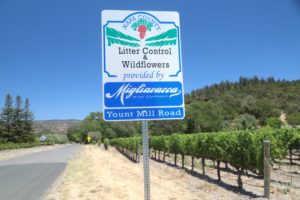 Other Migliavacca family continued to work in wine and spirits including in Galveston Texas where Giacomo and Madelena’s son John (Johnny) moved to in 1891 to oversee and operate the family export branch of Migliavacca Wine Co, taking full advantage of that city’s port to ship wine to Italy – numerous old newspaper articles reference a number of wine barrel shipments originating in Napa shipped to Galveston between the turn of the century and approximately the start of Prohibition. In 1893 John also started a cigar manufacturing plant in Galveston.
Other Migliavacca family continued to work in wine and spirits including in Galveston Texas where Giacomo and Madelena’s son John (Johnny) moved to in 1891 to oversee and operate the family export branch of Migliavacca Wine Co, taking full advantage of that city’s port to ship wine to Italy – numerous old newspaper articles reference a number of wine barrel shipments originating in Napa shipped to Galveston between the turn of the century and approximately the start of Prohibition. In 1893 John also started a cigar manufacturing plant in Galveston.
What is still the nation’s largest casualty number as a result of a natural disaster, the Galveston Hurricane in 1900 occurred when John and his family were living on Galveston Island. Their house was right next to the beach and the waters of the Gulf of Mexico.
Their story of escape is rather miraculous having fled on foot as the water and waves began to destroy their home and their neighbors’ homes. According to John’s wife Rosa (maiden name, Toselli from Sestri Levante) quoted in an article in the Napa Journal from September 22, 1900, she and her two sons (including their infant child) and her uncle survived by clinging to a piece of drift which carried them into a severely damaged nearby house where they battled the waves all night before being able to escape in the morning – walking through drift from the storm and the dead bodies of their neighbors. Her husband John was not home at this time along with two of their other children – and it wasn’t until 5 days later that he learned of their survival. Their story is eerily similar to many of the survivor stories from Hurricane Katrina.
Migliavacca Galveston heritage
Visit and photographs coming by end of 2026.
John’s brother Sero Migliavacca settled around Seattle in Washington state and opened a branch of Migliavacca Wine Co in Pioneer Square in 1899 called the Migliavacca Liquor Company. Migliavacca & Corglat operated a retail location at 109 South Main Street (109-111), having been established in 1899 and incorporated in 1905. Operations here were not small. According to an edition of The Seattle Star dated Saturday May 7, 1904 a steamer called Rainier L.H. Gray and Company arrived in the port of Seattle carrying a cargo of 1,000 wine and 500 barrels liquor consigned to Migliavacca Wine Co. In 1905, a court case was held in the state of Washington involving Migliavacca Wine Co. v. United States over a matter relating to importing goods from France.
Sadly the Migliavacca Seattle location closed in 1909. Later Sero was president of Bremerton Bank and involved in other banking activities. According to the March 5th edition of the Napa Weekly Journal from 1909, the Migliavacca Bank Building (referred to as the Citizens National Bank) was built in Seattle in 1909. It became a branch of Seattle First National Bank in 1927.
Once Prohibition started, for a few years, one of Giacomo’s sons operated Colonial Grape Products Company. One of his other sons, James later became director at the Bank of Italy (the precursor to Bank of America) and was also one of the founders of the private members only Napa Valley Country Club in 1915.
Because of both Katie’s strong interest in her family heritage and the fact that Migliavacca was once an integral player in downtown Napa – numerous records and historical items surrounding the old winery have been preserved and collected over the years.
Select Wines
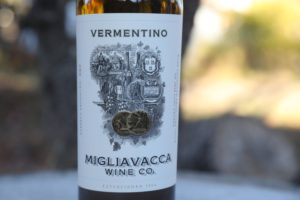
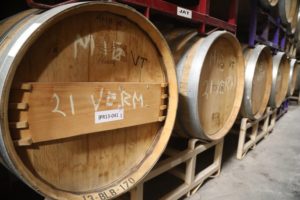 Whites/Rosato
Whites/Rosato
Mirroring her great, great grandfather’s winemaking, Katie’s philosophy has been to produce premium and affordable wines that are accessible to a wide range of budgets. And the focus so far has been on Italian varieties, honoring her family’s heritage. Similar when Giacomo was producing wines, Katie’s wines not only come from the Napa Valley but from sites within other parts of northern California.
Vince enjoys making the Migliavacca style of rosé – picking at a slightly higher brix as he puts it, “to get more out of the grape”. He looks for phenolic development, length and complexities on the palate, especially on the finish. The 2019 Migliavacca Rosato is 100% Petite Sirah and was sourced from the Tamayo Vineyard in Contra Costa County; it is not a lightly colored wine of this style rather is a darker salmon color in the glass. The bouquet offers a variety of aromatics including a sweetness of strawberry, hints of honeycomb and citrus. Quickly noticeable is this wine’s texture – creamy and supple with a viscosity the runs the breadth of the palate. Shows flavors of nectarine, mandarin and some mineral nuances. A richer showing.
The 2021 Migliavacca Rosato is a blend of Syrah & Mourvèdre; it is medium to deep copper in color. The bouquet offers aromas of citrus blossom, rhubarb and a lemon zest along with subtle hints of apricot and vanilla much deeper in the aromatics. The wine’s texture is creamy and supple across the palate but with an intensity of flavors including wild strawberry, mandarin and kumquat. The persistent finish lingers for some time with a richness of fruit. This is not a lighter styled rosé. This wine pairs very well with the spinach artichoke and jalapeno dip available at Brown’s Valley Market in the city of Napa.
The 2020 Migliavacca Sauvignon Blanc Napa Valley (inaugural release of this wine) is from a Coombsville Vineyard. This wine is medium yellow color; one can immediately tell this is not a green nor a grassy showing of this variety simply by smelling the aromas. The generous and well-layered bouquet offers scents of honeysuckle, citrus blossom, a hint of tarragon, pineapple, apricot, cantaloupe, passion fruit, coconut, lychee, honeycomb and vanilla. The supple, creamy and almost saline texture persists from the start through to the finish, complemented by flavors of mandarin, apple, pear and pineapple. No racy acidity here, instead, it is bottled California sunshine. It’s richly fruited finish lingers for some time along with medium acidity. When tasting this wine we thought of pairing it with Vietnamese spring rolls.
The 2018 Migliavacca Vermentino was sourced from a southeast facing block in a vineyard in Lodi. This site features even and slow ripening – the wine was aged in neutral French oak for 17 months. Offers pretty aromatics with notes of honeysuckle, citrus blossom and perhaps a tiny note of pineapple. Very balanced across the palate with flavors of golden delicious apple and mandarin orange. The finish is clean with an appealing suppleness across the palate. And a bright acidity that carries the length of the palate and continues on the finish. This vintage and wine was rated 92 by Dr. Liz Thach MW – her notes and comments are here.
These are terroir driven wines but beyond the site and varietal characteristics, Katie and Vincent are quick to point out that these wines are best enjoyed when paired with food, family and friends – creating moments where conversations and wines flow effortlessly.
And starting in 2019 the source for their Vermentino moved to the Napa side of Carneros from a block within one of Francis Mahoney’s vineyards (close to the border of Sonoma County). Vincent was already familiar with this particular block through his work with Venge Vineyards. With Venge focusing on Bordeaux varietals, the decision was finally made to cancel their contact for this fruit. While Kirk Venge was on the phone canceling the contract with Francis, Vincent overheard the conversation. After Kirk hung up the phone, Vincent asked him if he would be OK if he called Francis back – he did and ultimately Francis transferred over the contract to Migliavacca.
Vermentino is commonly grown in Provence in the south of France where it is known as Rolle. There is very little of this variety planted in Napa Valley; we are aware of only four vineyard sites in Napa Valley including two on the Napa Valley side of Carneros (Mahoney) and Steve Matthiasson’s Cressida Vineyard and two in Rutherford including the Rutherford Dust owned by Neal Family and AJT Vineyard owned by the Terlato family (Rutherford Hill Winery). The very few Napa Valley producers that make wines from Vermentino usually source grapes from outside of the county. According to the 2022 California State Grape Acreage Report in 2021 there were 4 bearing acres of Vermentino growing in Napa Valley.
The 2019 Migliavacca Vermentino is from the Mahoney Vineyard on the Napa side of Carneros. This wine is pale to medium yellow in the glass; the bouquet is generous showing lemon/lime and honeysuckle, aromas that this variety often exhibits but also with other more fruit driven aromas including of mango, papaya, lychee, pineapple and some sweet dessert spice notes of crème Brule and vanilla. This is a very enjoyable wine to smell and equally as enjoyable on the palate. A light creamy texture runs the length from start to finish; it is balanced very nicely with the wine’s bright acidity and refreshing citrus and red apple flavors. There is no grassiness or tartness on the palate. Those who have never had a California grown Vermentino would do well to start with this one. This wine was fermented slow and cold; it spent 17 months in neutral French oak following fermentation. Only 90 cases were produced.
The 2021 Migliavacca Vermentino is deep gold; the aromas are ripe, sweet and also honeyed. They include both tropical and stone fruits including honeysuckle, pineapple, crane melon, nectarine, yellow peaches, mango and dessert scents of crème Brule, caramel and vanilla. Like the bouquet, the palate is also a fruit forward expression of this variety offering flavors of mango, yellow peach, ripe papaya, golden delicious apple, apricot and pineapple. The finish is rich, long lasting and showcases layers of ripe fruit but never crosses into the territory of being overripe. This wine offers a noticeable weight with a creamy and silky texture. The acidity is balanced and bright. This is perhaps the most generous of all the Migliavacca Vermentino vintages we have tried to date. The richness of texture and flavor would hold up well with a creamy garlic pasta. It was aged 19 months in neutral French oak barrels.
Reds
While native to central Italy where it is commonly grown, there is not a lot of Sangiovese planted in Napa Valley but there are quite a few small plots scattered around the valley. Noteworthy small Sangiovese plantings are at Paoletti Vineyards in Calistoga and the Rodeno clone of Sangiovese in Oakville.
The 2017 Migliavacca Sangiovese was sourced from a small block of this varietal growing high on the slopes of Atlas Peak in the Antinori Vineyard (Antica Winery). The Italian Antinori family owns this 1,200-acre site on Atlas Peak and are one of the oldest family-owned businesses in the world (dating back to 1385). How appropriate that one of Napa Valley’s oldest original Italian winemaking families, the Migliavacca’s source fruit from this particular vineyard. Medium ruby in color; shows its varietal characteristics immediately on the bouquet with a darker spiciness, dried tobacco leaf, plum and dried herbs. Somewhat savory in its aromatics. Very balanced food friendly wine. Lingers with some spice notes along with nicely integrated tannins. The finish is seamless with bright acidity.
The 2018 Migliavacca Sangiovese is medium to dark ruby in color; immediately the bouquet offers aromas of ‘Sangiovese spice/savory notes’ inherent to this variety including pink peppercorn and dried herbs along with dark cherry, a sweet dark licorice note, hints of sweet anise and a subtle note of cardamom and perhaps some clove, deeper into the aromas. The palate features flavors of plum and dried herbs along with a balanced but bright acidity (especially on the finish). The tannins feel dusty in nature; while dense they are not course or heavy and are already well integrated at the time of our tasting (3.5 years post vintage date). The finish lingers with flavors of dried tobacco leaf and brought us back several years, to when we visited a tobacco farm in the Cuban countryside. This wine spent 22 months in neutral French oak and only 65 cases were produced.
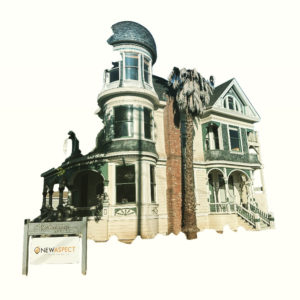 The 2019 Migliavacca Cabernet Sauvignon Napa Valley is from a small mostly dry-farmed vineyard in Pope Valley (not far from Aetna Springs Resort) with the vines 13-years old at the time of harvest. This wine is a blend of clones 4, 8 and 15 still surviving on AXR rootstock. This wine is deep ruby in color; the bouquet is primarily red fruited including of red cherry, currant and plum. Several threads of non fruit spices weave their way through the aromatics including tobacco spice, dried herbs including sage and dried rose petals. A hint of mocha is revealed much deeper in the bouquet. And let this wine open for a while, the fruit will become more expressive. This wine is 15.1% alcohol but the bouquet or the palate doesn’t show ‘ripe’ like often found in similar alcohol wines from Napa Valley. The palate somewhat mirrors the bouquet and offers flavors of red cherry, currant, red plums and strawberry. Despite the higher alcohol, its overall feel is one of balance. The tannins are lightly grained in texture, broadly distributed and well-integrated on the bright finish. This wine also lingers with a dusty/earthy character and a light pepper and woodsy spice. It was aged for 36 months in both newer and neutral French oak barrels with small amounts of other varieties used for topping the barrels (Cabernet Franc, Malbec, Merlot, and Petit Verdot).
The 2019 Migliavacca Cabernet Sauvignon Napa Valley is from a small mostly dry-farmed vineyard in Pope Valley (not far from Aetna Springs Resort) with the vines 13-years old at the time of harvest. This wine is a blend of clones 4, 8 and 15 still surviving on AXR rootstock. This wine is deep ruby in color; the bouquet is primarily red fruited including of red cherry, currant and plum. Several threads of non fruit spices weave their way through the aromatics including tobacco spice, dried herbs including sage and dried rose petals. A hint of mocha is revealed much deeper in the bouquet. And let this wine open for a while, the fruit will become more expressive. This wine is 15.1% alcohol but the bouquet or the palate doesn’t show ‘ripe’ like often found in similar alcohol wines from Napa Valley. The palate somewhat mirrors the bouquet and offers flavors of red cherry, currant, red plums and strawberry. Despite the higher alcohol, its overall feel is one of balance. The tannins are lightly grained in texture, broadly distributed and well-integrated on the bright finish. This wine also lingers with a dusty/earthy character and a light pepper and woodsy spice. It was aged for 36 months in both newer and neutral French oak barrels with small amounts of other varieties used for topping the barrels (Cabernet Franc, Malbec, Merlot, and Petit Verdot).
The 2021 Migliavacca Sangiovese is medium ruby in color; this wine was aged for approximately 30 months in oak barrels prior to bottling. A lovely perfumed but subtle nose introduces strawberry, not fully dried apricot, and dark plum with hints of blood orange and licorice. A lighter layer of espresso and clove shows deeper in the aromatics. Not one component of the bouquet dominates and its focus is on its fruit attributes; we like that especially with this variety in particular. Balanced with a bright and refreshing acidity, the palate offers flavors of red cherry, dark raspberry, plum, blood orange, dried apricots and assorted dried herbs. The tannins are polished, rounded and linger with a light but persistent dusty character which ultimately outpaces the fruit on the finish. 14.9% alcohol. This is a versatile food wine; we would love to pair this bottling with a tomato sauce and ground beef based ravioli.
—
Katie and Vincent initially tried to create a contemporary label and even hired a designer to do so. After numerous iterations on a label and months into the process, ultimately, they decided they liked Giacomo’s original label. Good choice! San Francisco Bay Area based Cult Partners who helped update Giacomo’s original label is also the firm responsible for the design of several other Napa Valley brands including Buselli, Trinchero, Clos Pegase and Napa Cellars.
Eventually the plan is to introduce a higher end range of wines focusing on Napa Valley including a Chardonnay, Sauvignon Blanc and a Cabernet Sauvignon. The Cabernet Sauvignon will be released later in 2022. The wines are sold primarily direct to consumer with limited local distribution including sometimes at Allegria Restaurant (right next to the site of the Migliavacca Commercial Building and the first restaurant placement of Migliavacca wines), Foodshed, the Archer Hotel and the Napa Country Club, all in the city of Napa, Farmstead and Press in St. Helena, the French Laundry in Yountville and Scala and The Fink in the city of Napa. Sometimes Katie will represent the wines at certain events including at By-Appointment Networking Group Napa Valley (BANG), Festa Italiana in Lyman Park in St. Helena, the Wine Country Polo Club (in Santa Rosa) and previously at an event hosted in part by San Francisco based Mechanics Institute.
In addition to purchasing wines directly from their website, Migliavacca offers two shipment options, twice a year as part of their CLUB 1866 (either 6 bottles or 12 bottles shipped in April and October). For more information or to purchase wines, visit: www.migwine.com
PHOTOGRAPHS
Migliavacca Mansion
Giacomo’s patented wine corking device from late 1860s
Other historically relevant buildings or heritage in Napa
- Semorile Building, dates from 1888. Now home of Bounty Hunter & related offices
- Migliavacca Building, 1916, still standing and now home to Alpha Omega tasting room
- Front of Migliavacca building with date and name listed
- Bronze medallion featuring image of the Migliavacca Mansion used on city of Napa historic district signs
- Postcard showing the Migliavacca Building built in 1905, located on the northwest corner/block of 1st & Main Street
- Migliavacca Building – constructed in 1905, damaged a year later in earthquake.
- Migliavacca Building downtown Napa. 1973 Sketch on glossy paper
- Second floor plan, Migliavacca Building. Torn down in 1973. Now home of Dwight Murray Plaza
- Dwight Murray Plaza – former site of the Migliavacca Building downtown Napa
- Postcard view of the MIgliavacca Building, 1st Street, Napa
- 1911 Bill of Sale, Joseph Migliavacca signature
- Migliavacca building, downtown Napa
Labels from picturesque locations
Original Migliavacca winery site, now Napa County Library
Giacamo Migliavacca’s original home, Pavia Italy
The University of Pavia
Pavia, Italy
Hornitos, CA (note: the smoke-filled skies during our visit were directly from fires in Napa Valley)
Kingfish Pub & Cafe, Oakland CA (partially owned by winemaker Vincent Traverso)
Migliavacca & Corglat Building, Seattle

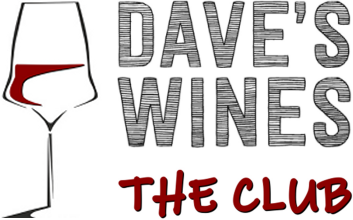





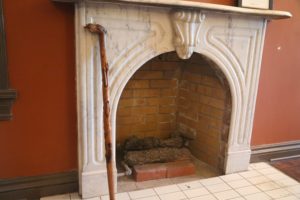
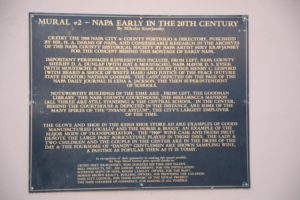
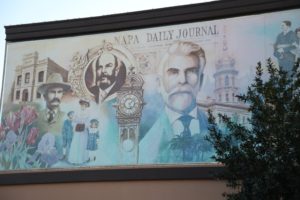


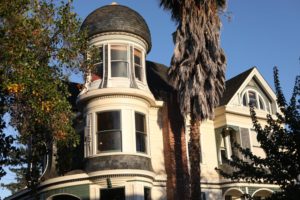
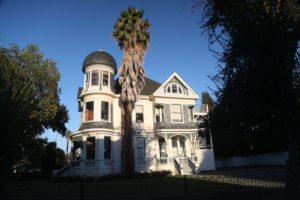
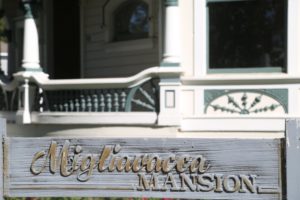
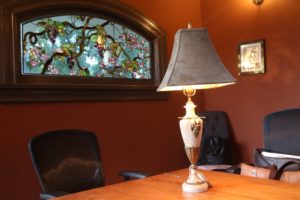
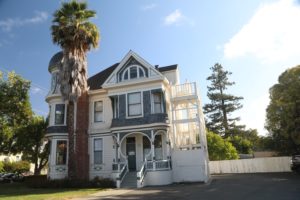
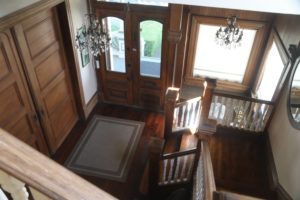


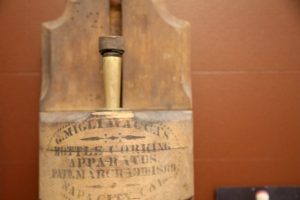
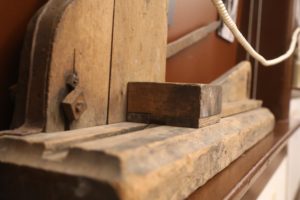
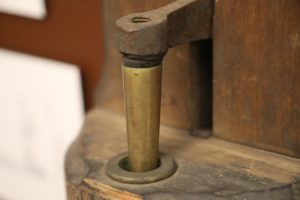
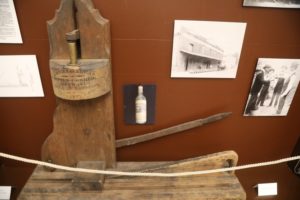
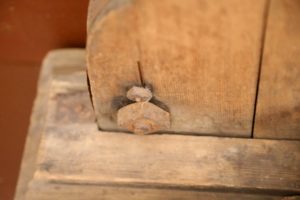
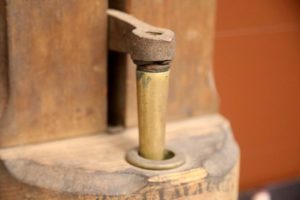
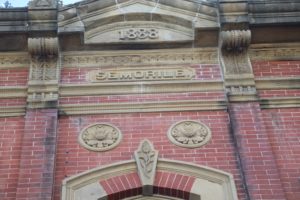
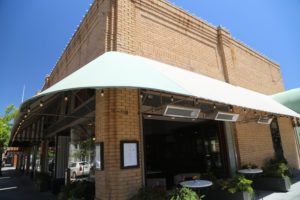
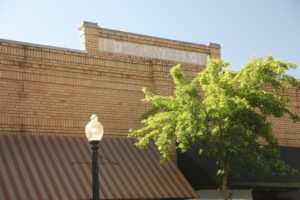

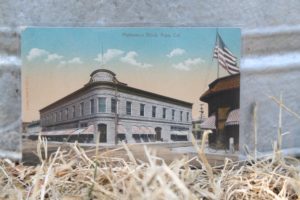
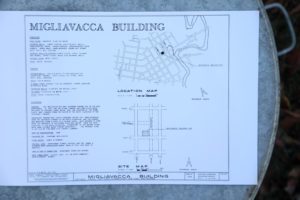
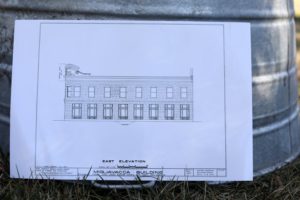

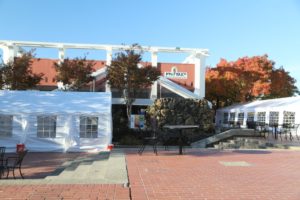
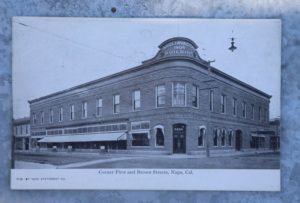
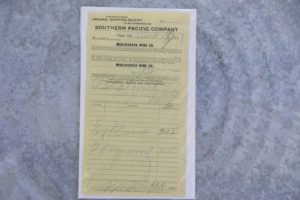
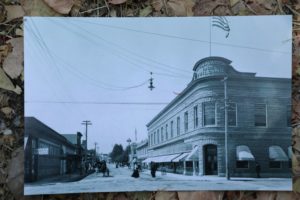
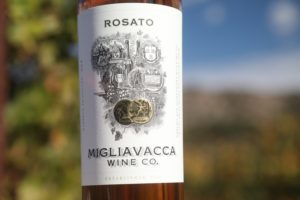
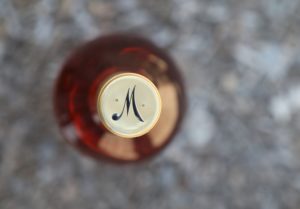
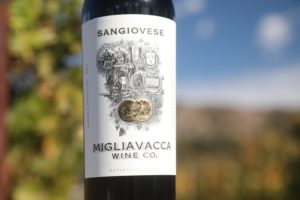
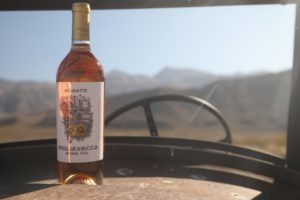
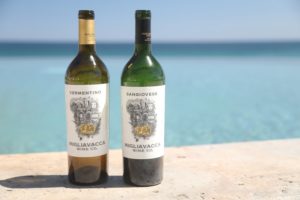
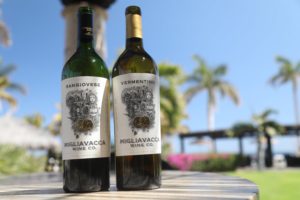
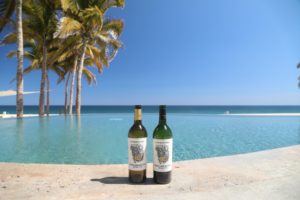
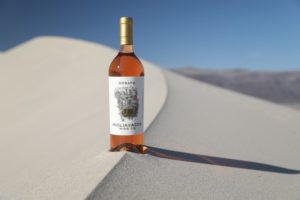
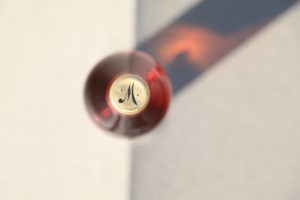
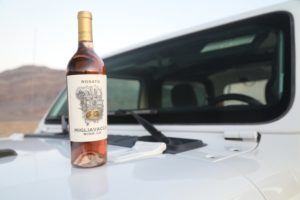
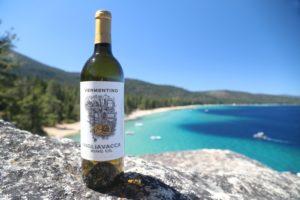
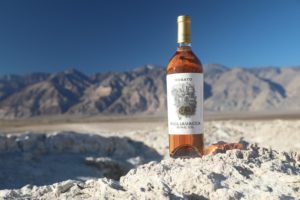
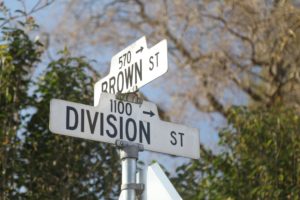
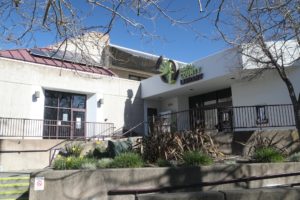
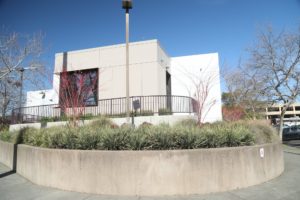
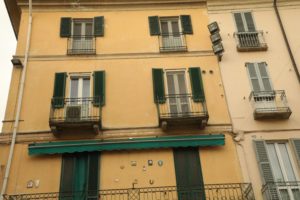
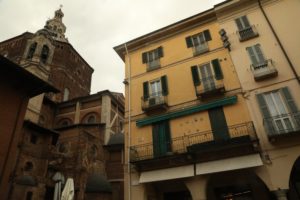
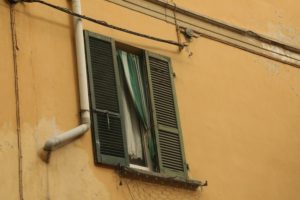
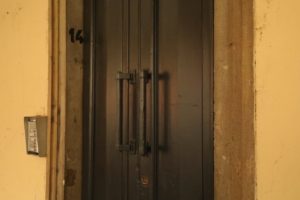
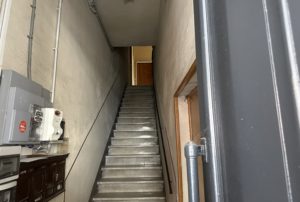
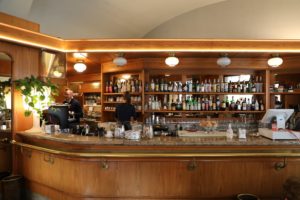
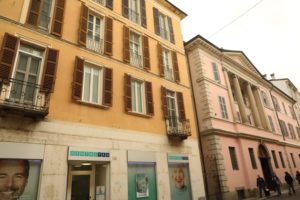
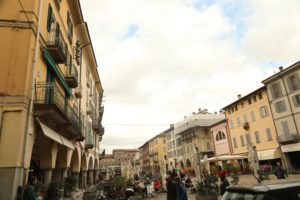
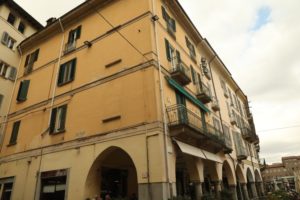
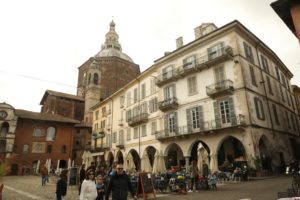
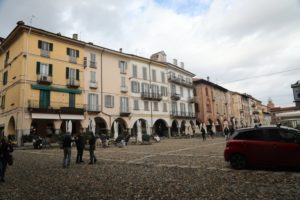

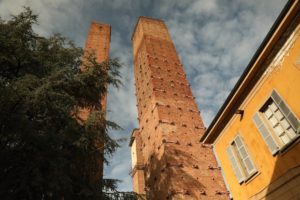
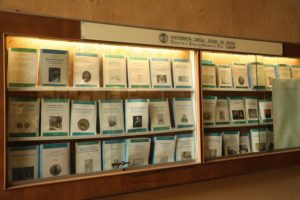
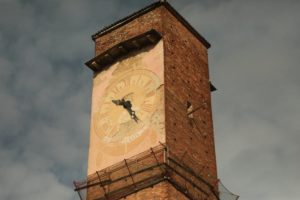
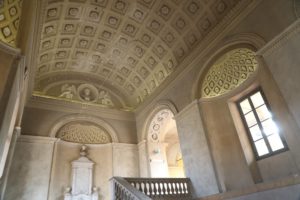
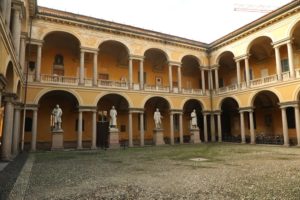

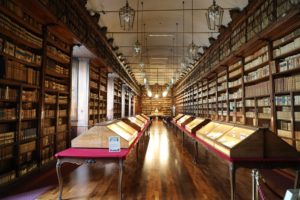
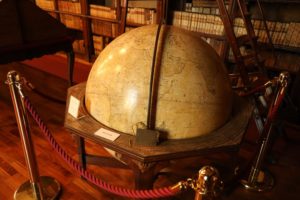
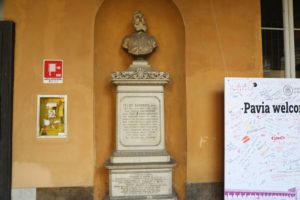
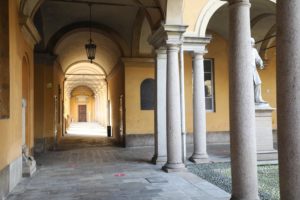
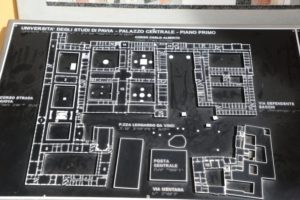
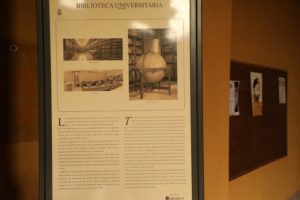
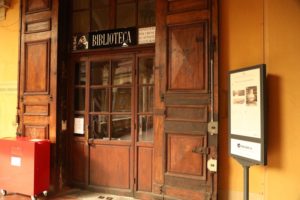
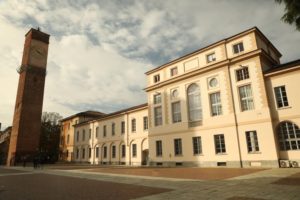
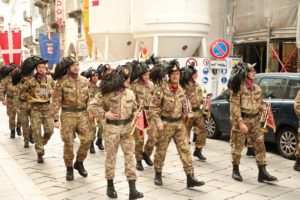
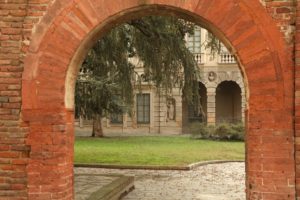
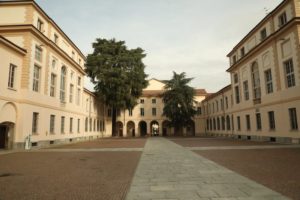
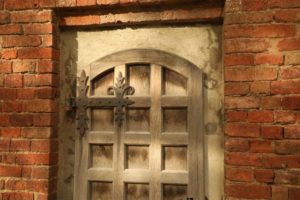
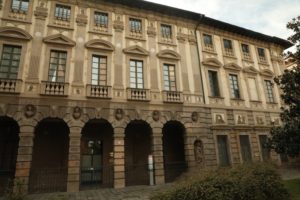
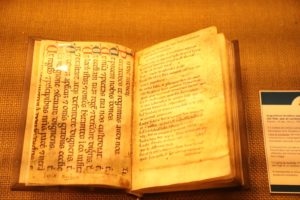
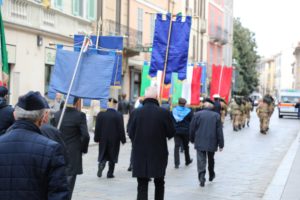

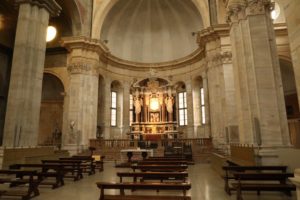
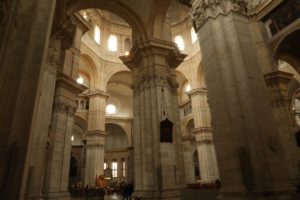
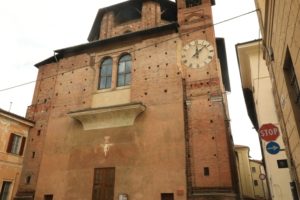

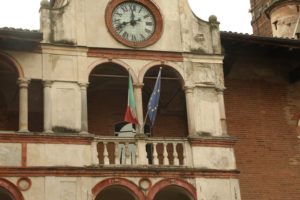
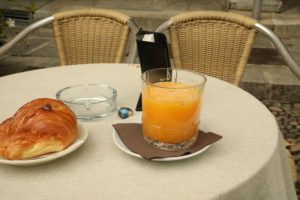
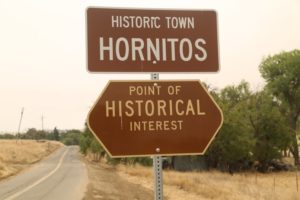
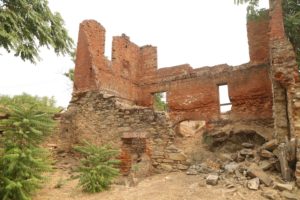
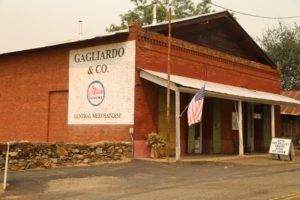
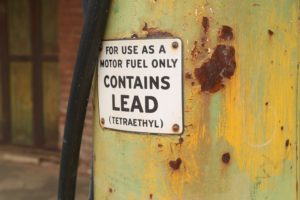
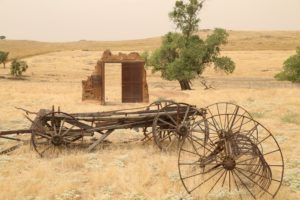
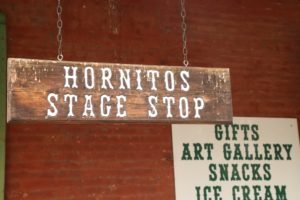
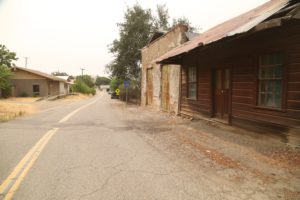
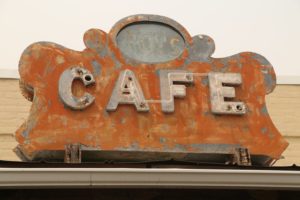
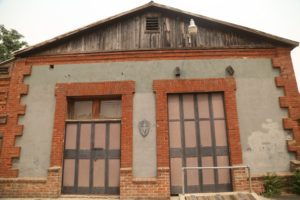
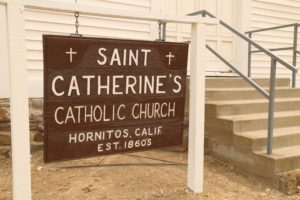
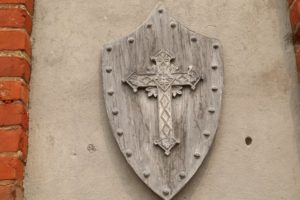

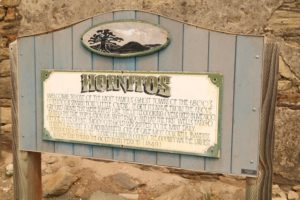
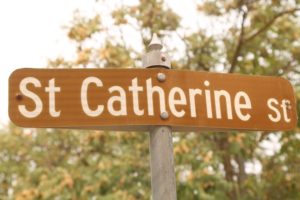
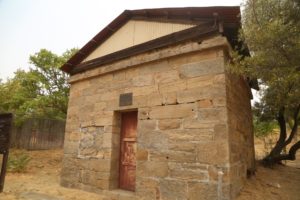
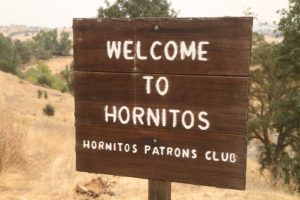
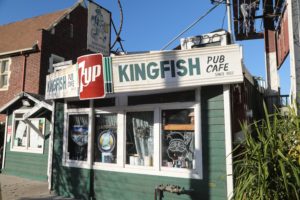
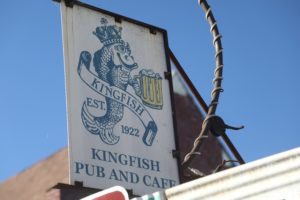
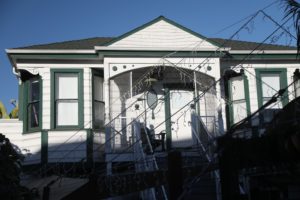
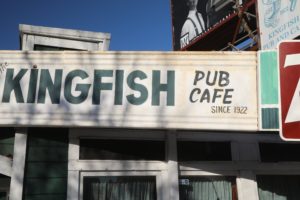
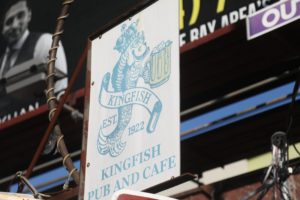
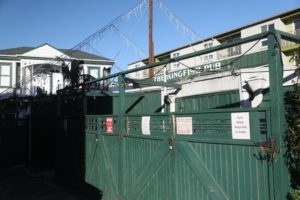

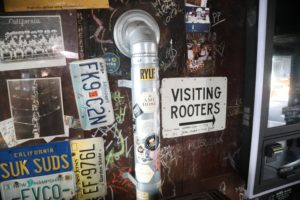
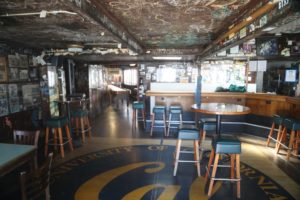
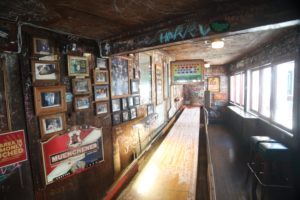
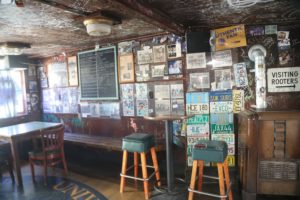
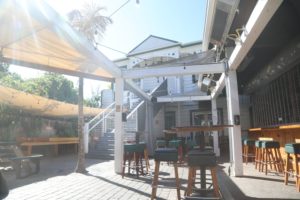
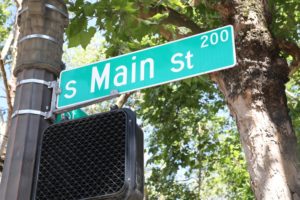

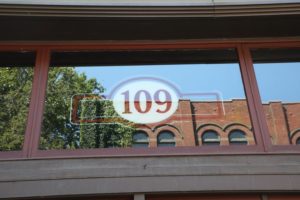

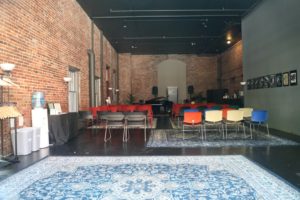


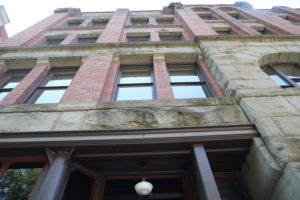
I am looking for a few wines for a Christmas gift, a sampler of 4-5 to send with a few cheeses. I was going to order from France , but I had rather spend my money in California. I am sure the fires hurt a lot of people there as well as vineyards.
Hi Rebecca, if you send me an email I can send you information about our holiday special – katie@migwine.com. Otherwise if you would like to peruse our site and the wines we have available directly, you can visit: https://migwine.com/collections/frontpage
Rebecca – yes, it has been difficult with the Covid and now the fires. But the valley is resilient 🙂
I just sent your note to Katie directly. Hope you can connect with her. Thanks ~ Dave
Katie, I am the host of the Raviloli Party, I know you have spoken to our Daughter Dorothy Vidal and I want to know how to receive 6 more bottles for the party, sorry but if I ask my daughter she will order it and that I do not want. I am able to do this on my own. Please advise me just what I need to do. If you will text the information to 817 793 6196 I would very much appreicate it. Thank You Diane Migliavacca Mott.
Diane – I’ve passed your note on to Katie.
Hello Katie from a distant relative. My great-great grand uncle was Bartolomeo Semorile who had his grocery store in his building. I live in Utah but would love to try you wine sometime.
Tina – you will have to visit the Semorile building in Napa next time you are in town 🙂 I’m not sure if Katie can ship to Utah. I will ask her next time I see her. Her wines are available for purchase here:
https://migwine.com/collections/frontpage?mc_cid=0af02b5aea&mc_eid=417f3b9486